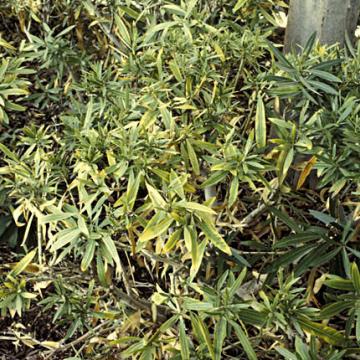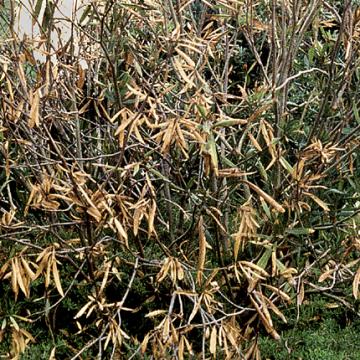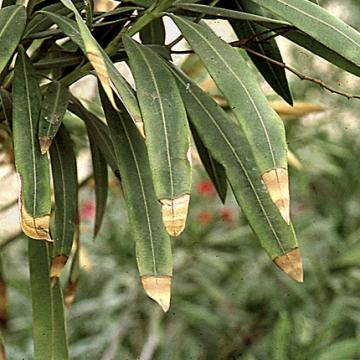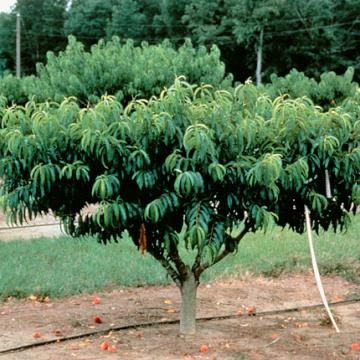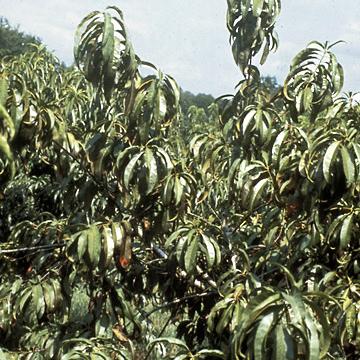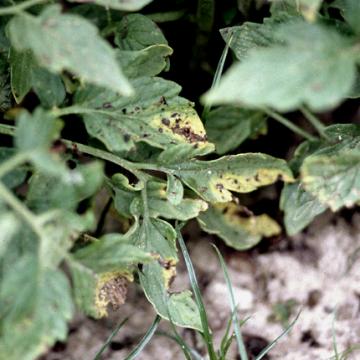DISEASE: Oleander leaf scorch
HOST: Oleander
Diseased plant with scalloped, yellowish leaves. This usually is followed by dieback of twigs and branches. Plants often die 2 years after infection.
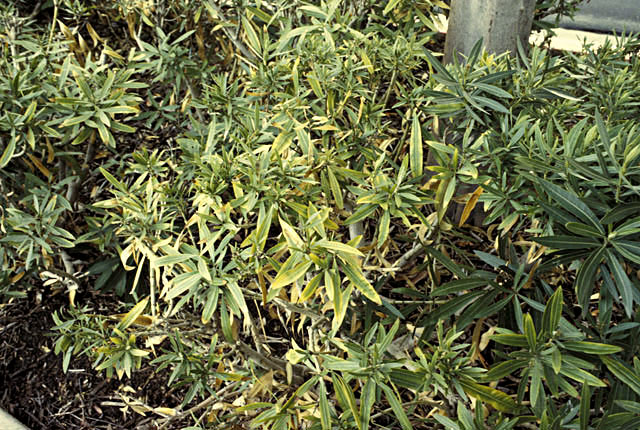
Oleander leaf scorch | Oleander
DISEASE: Oleander leaf scorch
HOST: Oleander (Nerium oleander)
PATHOGEN: Xylella fastidiosa
SOURCE: S. Purcell
DISEASE: Oleander leaf scorch
HOST: Oleander
Oleander with symptoms of severe scorch.
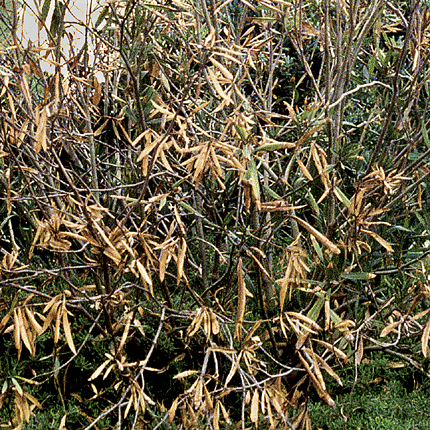
Oleander leaf scorch | Oleander
DISEASE: Oleander leaf scorch
HOST: Oleander (Nerium oleander)
PATHOGEN: Xylella fastidiosa
SOURCE: M. Blua
DISEASE: Oleander leaf scorch
HOST: Oleander
Oleander with scorch symptoms primarily at leaf tips, an early stage of disease.
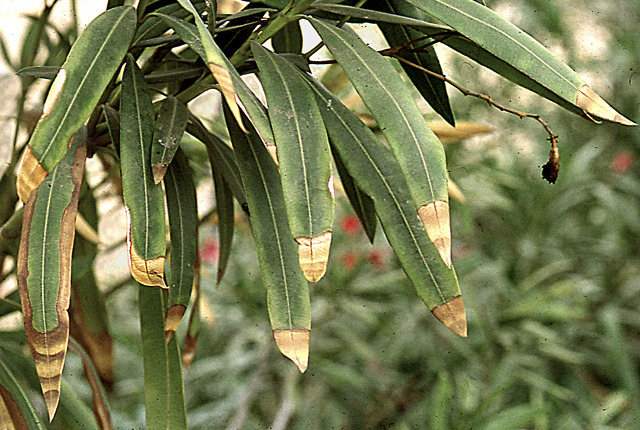
Oleander leaf scorch | Oleander
DISEASE: Oleander leaf scorch
HOST: Oleander (Nerium oleander)
PATHOGEN: Xylella fastidiosa
SOURCE: M. Blua
DISEASE: Phony disease (Phony peach)
HOST: Peach
Tree with characteristic reduced growth. Foliage is dark green, then turns yellowish. Twigs become brittle and branches die back. Fruit are small.
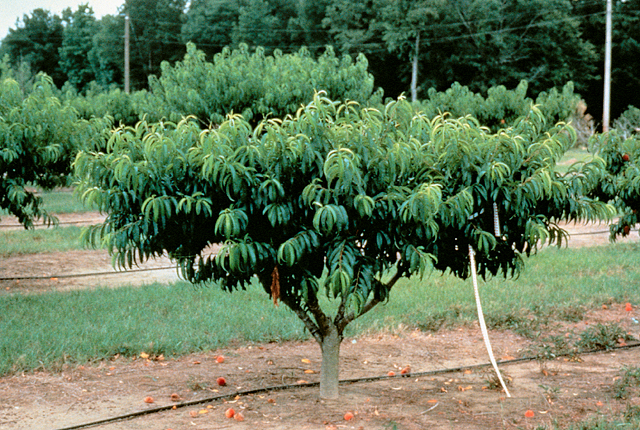
Phony disease (Phony peach) | Peach
DISEASE: Phony disease (Phony peach)
HOST: Peach (Prunus persica)
PATHOGEN: Xylella fastidiosa
SOURCE: P. C. Anderson
DISEASE: Phony disease (Phony peach)
HOST: Peach
Twigs on diseased trees have shortened internodes and increased lateral branching.
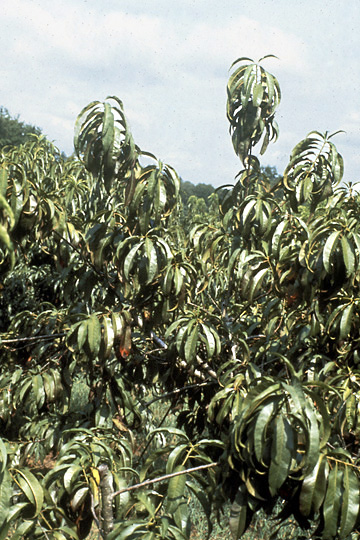
Phony disease (Phony peach) | Peach
DISEASE: Phony disease (Phony peach)
HOST: Peach (Prunus persica)
PATHOGEN: Xylella fastidiosa
SOURCE: M. Davis
DISEASE: Syringae leaf spot
HOST: Tomato
Leaves with brown necrotic lesions and chlorotic margins. Symptoms vary greatly among cultivars. Some have black or brown lesions with bright yellow, chlorotic areas and others do not have yellowing.
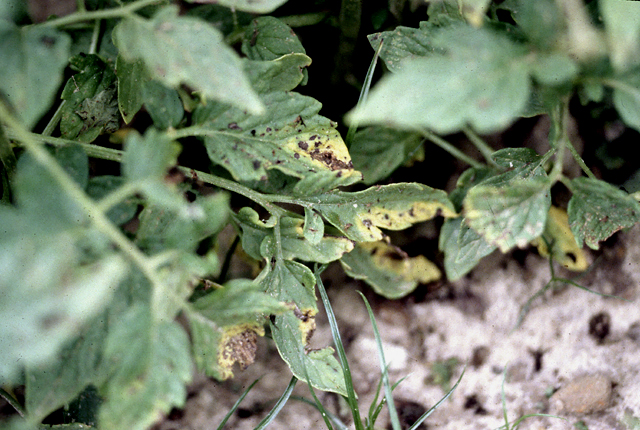
Syringae leaf spot | Tomato
DISEASE: Syringae leaf spot
HOST: Tomato (Lycopersicon esculentum)
PATHOGEN: Pseudomonas syringae pv. syringae
SOURCE: R. Gitaitis


